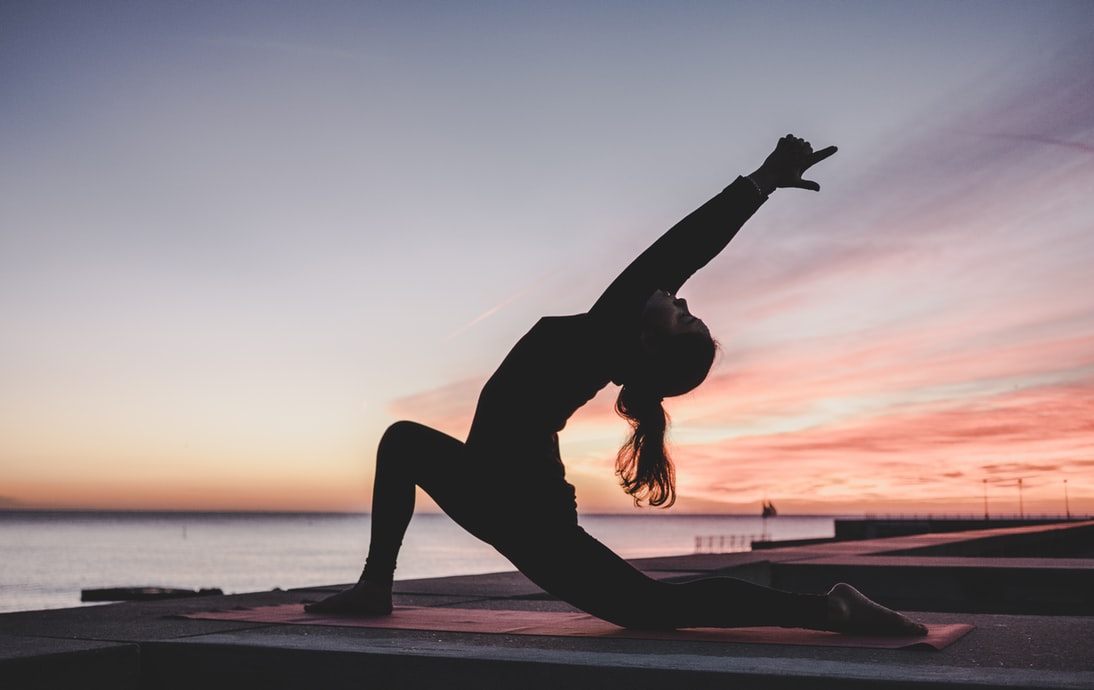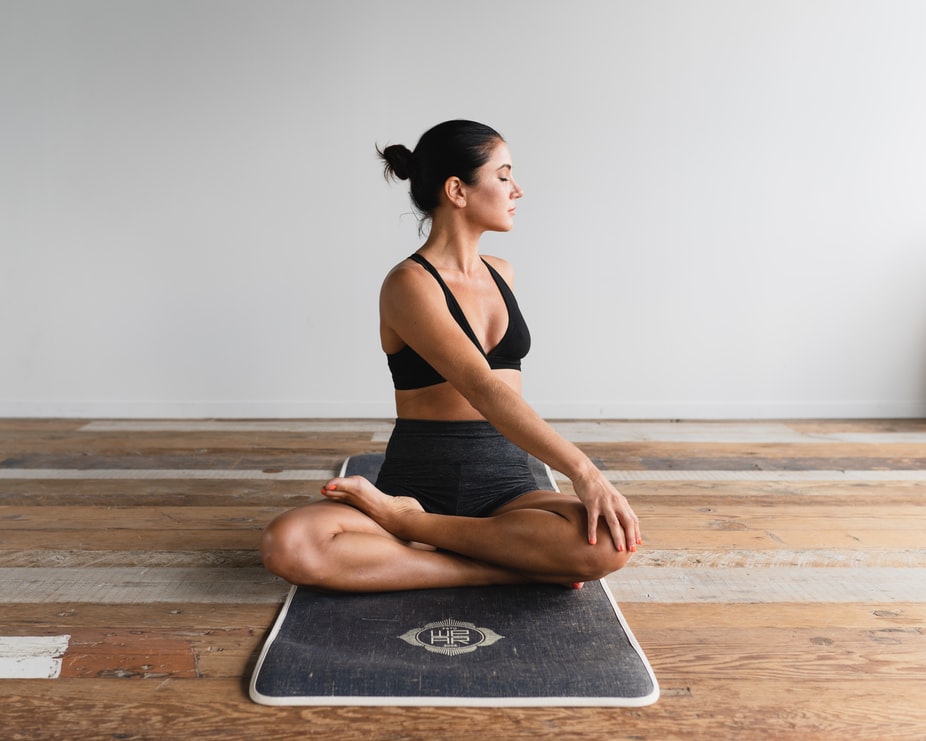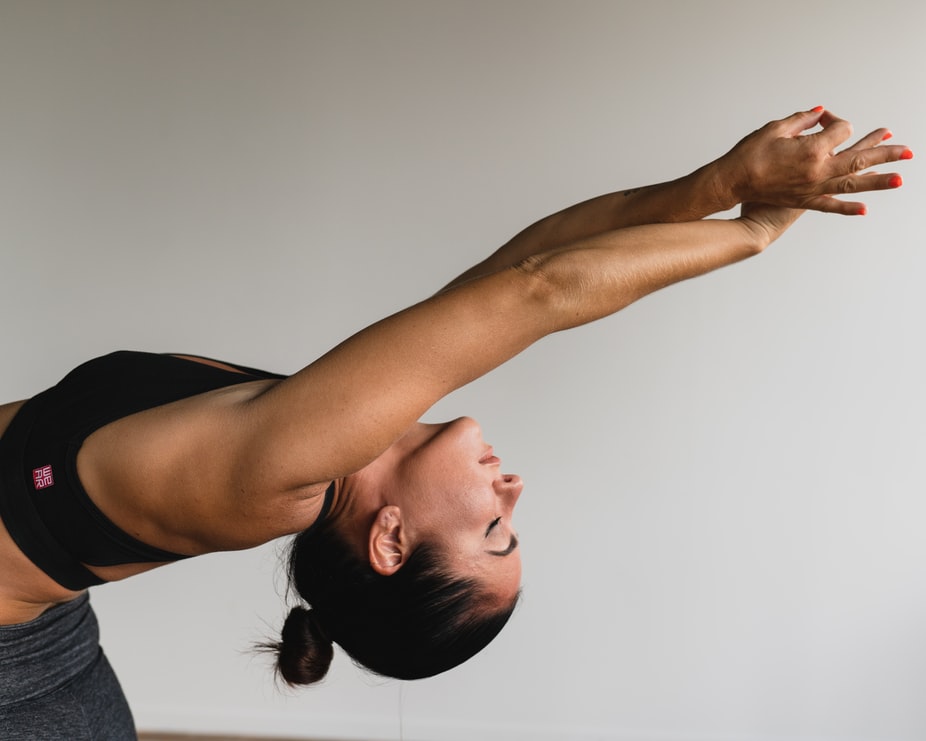Sometimes I can be a bit of a worrywart. Over the years, yoga has taught me a variety of ways to work through my anxiety, and so today I want to share the first of my top three favorite calming and restorative yoga poses. These yoga asanas can be practiced whenever you feel too tense or overstimulated. I recommend you to practice each of these a few times per week, up to around six days per week. For those who are too fatigued to do this or don’t have time, a shorter amount is certainly fine.
The reason this first yoga pose works so well for me is that it is comfortable and comforting. If you try it at home, I recommend turning the lights off and lighting a candle. It’s not necessary, but quite lovely the candles provide a warm light that is calming and soothing.
How to practice child’s pose (balasana):
Start by kneeling on all fours, separating your knees about as wide as your hips, and then sink your hips back towards your heels. Allow your torso to rest on your thighs and your forehead to touch the floor. You can either stretch out your arms in front of you, palms down, or you can lay them alongside your body, palms up. (i prefer the latter.) relax your shoulders and enjoy. 🙂
if this doesn’t feel good on your knees, you can roll up a blanket and place it behind the knees.
I love child’s pose. It’s so great to stretch a tight back or take a break from a yoga session! One of my favorite poses for when I just want to shut off.
The next pose is my all-time favorite pose. In the world. Ever.
It’s called viparita karani or “legs up the wall pose.” it helps me in ways I can’t even describe. something about it is just incredibly relaxing and healing (and fun!)
My best friend is a yoga teacher who lives in NY. When I was visiting her last Christmas, she taught me this pose after a marathon day of shopping in manhattan. It’s magic! It is just crazy how good it feels – like all the blood is circulating back into your body from the legs & feet. There is no more delightful way to both recharge and restore.
How to practice legs up wall (viparita karani):
To begin, grab a bolster, or fold a blanket (or two) lengthwise and place it a few inches from a wall. Then, as gracefully as you can, (ha!) scoot your bum towards the wall, eventually letting your legs rest comfortably. One trick for getting into the posture is sitting next to a wall with the side of your body, and your knees bent into the chest. Bring your lower back onto the floor while sweeping the legs up onto the wall.
If you’re really in the mood, you can drape a scarf or scented eye pillow over your eyes… and the swooning can commence. Stay there for as long as you like. To come out, bring your knees to your chest and roll to your side.
If it feels better, feel free to remove the blankets or bolster. The pose will still work its magic.
This was always my favorite pose at the end of my yoga classes. I also would bring the soles of my feet together and sit in an up the wall kind of butterfly pose.
The last favorite calming and restorative yoga pose to show you is savasana (it is also referred to as corpse pose, but I don’t like that name. it’s too morbid.) Savasana is genuinely a heavenly posture. It’s also so very important–as it is the time when our bodies have the opportunity to soak up and absorb the day’s practice. It always makes me a bit sad if someone leaves class before this pose. That’s one of the reasons why, when I teach, I try to really emphasize that Savasana is one of the most important, if not THE most important, poses of the practice!
Savasana is typically the final pose of a yoga practice, (sometimes also the first) but there is no reason you can’t enjoy this pose on its own. The basic idea is to put your body in a neutral position, and then soften and relax.
How to practice corpse pose (Savasana):
To begin, lie on your back, spread your arms and legs about 45 degrees from your body and rest your head comfortably on the floor. Make sure you are warm enough; I sometimes use a blanket and/or an eye pillow. Inhale and exhale naturally. Try to release tension from all the different parts of your body, and just be.
I find that the more physically exhausting my yoga practices are, the more relaxed I can be in savasana (an eye pillow helps me too). And the more intense my practice, the more critical savasana! It is my time to rest and be gentle with my body.
How many of you love this pose? I know I do. It’s especially rewarding after a rigorous yoga practice although I often enjoy it in bed too, heh. have you ever tried it?




